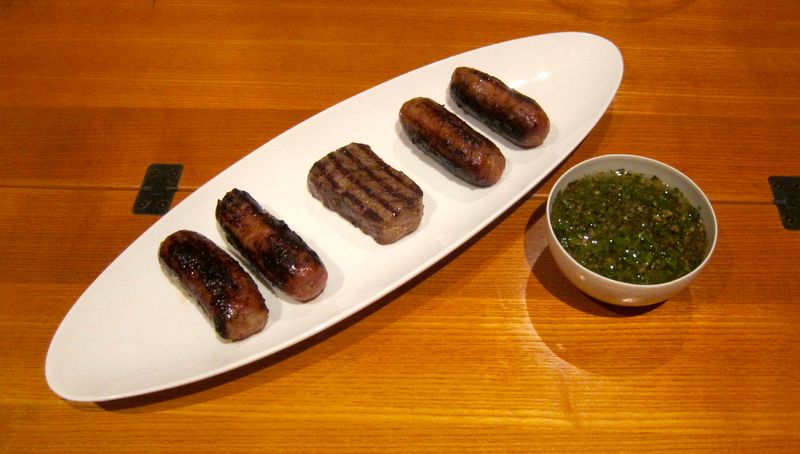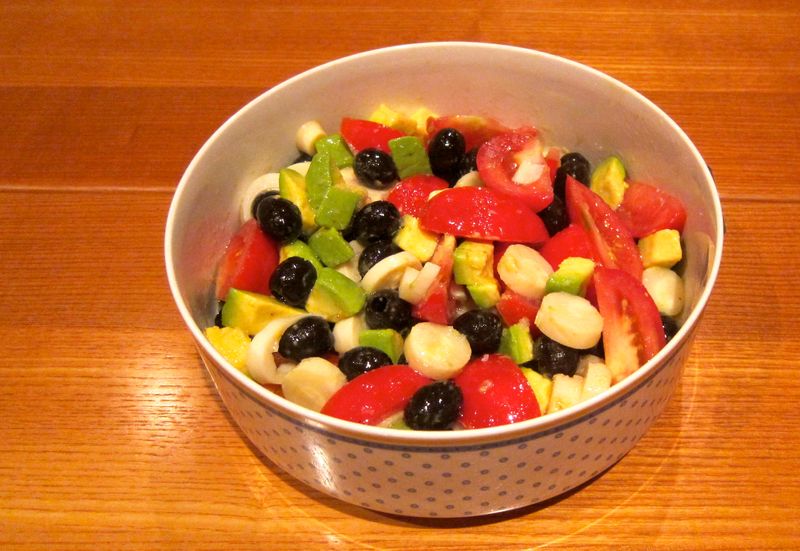As if prearranged, we went to the Bermuda World Rugby Classic last evening and watched Argentina play South Africa. Argentina lost. We did, however, manage to get our Argentine meal in before the game.
When pondering Argentia, my thoughts immediately go to red meat and red wine. According to an article that appeared in The Economist earlier this year, Argentines eat more beef per capita that anyone else in the world. Your average Argentine wolfs down 55.1kg of moo per year compared to, say, Canadians who eat a retatively modest 32.8kg. (Suprisingly, it's the Luxembourgeois' who consume more meat than anyone else when you include pork, poultry, mutton and goat - an unbelievable 136.5kg per person compared to Canadians, 98.7kg and Argentines, 91.7kg.) VEGETARIANS NOT WELCOME.
Meat is typically cooked on an asado, Argentine for BBQ. Like its
 North American counterpart, asado also refers to the social gathering that surrounds the meal. The meat for an asado is not marinated, the only preparation being the application of salt before and/or during the cooking period. Salad is the most common accompaniment.
North American counterpart, asado also refers to the social gathering that surrounds the meal. The meat for an asado is not marinated, the only preparation being the application of salt before and/or during the cooking period. Salad is the most common accompaniment.
Argentina is the fifth largest producer of wine in the world. Sixty percent of Argentine wine comes from the Mendoza region. Malbec is used to make Argentina's best known wines.
 A popular confection about which I knew little until a few years ago is dulce de leche. Yes, I know it might be your favorite Häagen-Dazs flavor but do you know what it is and that Argentines claim it as their own? Dulce de leche, translated, means milk candy or milk jam. You can make some at home. Slowly simmer a mixture of milk and sugar stirring almost constantly. Much of the water in the milk evaporates and the mix thickens; the resulting dulce de leche is usually about a sixth of the volume of the milk used. The transformation that occurs in preparation is caused by a combination of two common browning reactions called caramelization and the Maillard reaction. Even easier, buy it at any perveyer of fine foods.
A popular confection about which I knew little until a few years ago is dulce de leche. Yes, I know it might be your favorite Häagen-Dazs flavor but do you know what it is and that Argentines claim it as their own? Dulce de leche, translated, means milk candy or milk jam. You can make some at home. Slowly simmer a mixture of milk and sugar stirring almost constantly. Much of the water in the milk evaporates and the mix thickens; the resulting dulce de leche is usually about a sixth of the volume of the milk used. The transformation that occurs in preparation is caused by a combination of two common browning reactions called caramelization and the Maillard reaction. Even easier, buy it at any perveyer of fine foods.
Josée's pre-Rugby World Cup Argentine menu:
Grilled Beef and Sausages
Served with Chimichurri Sauce
Salad
Chimichurri is a condiment that is used with grilled meats and has its origins in Argentina. Chimichurri is made from finely chopped parsley, minced garlic, olive oil, oregano and white or red vinager. The Argentine gourmet Miguel Brascó claims that the word chimichurri originated when the British were captured after the British invasions of the Río de la Plata. The prisoners asked for condiment for their food mixing English, aboriginal and Spanish words. According to this story, che-mi-curry stands for "che mi salsa" (give me condiment) or "give me curry". The word then corrupted to chimichurri. Another theory for the name of the sauce comes from the Basque settlers that arrived in Argentina as early as the 19th century. According to this theory, the name of the sauce comes from the Basque term tximitxurri, loosely translated as "a mixture of several things in no particular order".
The wine for the meal was Riglos Gran Malbec 2008, Mendoza, Argentina. The wine for the Rugby? I have no friggin idea but there was an awful lot of it.
Salud!
Joseph Froncioni










































































































Comments